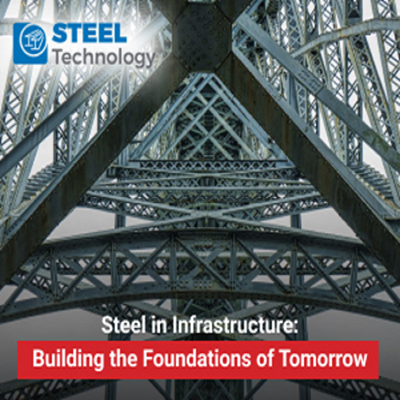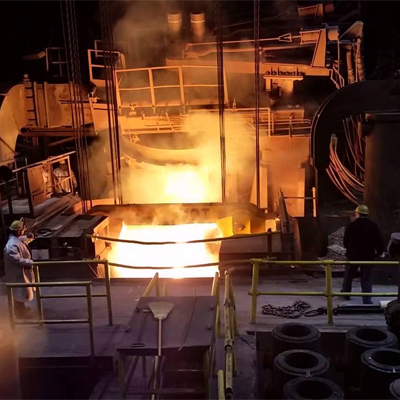Steel in Infrastructure: Building the Foundations of Tomorrow

Introduction:
In the ever-evolving world of construction and infrastructure development, steel stands as a silent yet robust hero, playing a pivotal role in shaping the skylines and foundations of tomorrow. From towering skyscrapers to sturdy bridges, steel has become the backbone of modern construction, providing strength, durability, and versatility that have transformed the way we build our cities.
The Historical Significance of Steel in Construction:
The use of steel in construction dates back centuries, but its true potential was unlocked during the Industrial Revolution. With the advent of mass production and the Bessemer process in the 19th century, steel became more accessible, leading to a revolution in the construction industry. The Eiffel Tower, completed in 1889, stands as a testament to the power and possibilities of steel, showcasing its ability to reach new heights both literally and figuratively.
Strength and Durability:
A fundamental factor contributing to the indispensability of steel in construction lies in its exceptional strength. The high tensile strength of steel enables the construction of structures capable of withstanding substantial loads and forces, rendering it an optimal material for the development of large-scale projects. Whether it be a towering skyscraper or an expansive bridge, steel imparts the necessary structural integrity, guaranteeing the safety and enduring longevity of these constructions.
Moreover, steel's durability makes it resistant to environmental factors that can compromise the integrity of other materials over time. It doesn't warp, rot, or decay, ensuring that structures built with steel maintain their strength and stability for decades.
Versatility in Design:
Steel's versatility extends beyond its strength and durability; it also offers unparalleled flexibility in design. Unlike traditional construction materials, steel allows architects and engineers to create innovative and aesthetically pleasing structures. The malleability of steel enables the construction of complex shapes and designs, pushing the boundaries of what is possible in architectural creativity.
The use of steel in combination with other materials further enhances its design possibilities. For example, the integration of glass and steel in modern buildings not only creates visually stunning structures but also maximizes natural light and energy efficiency.
Speed of Construction:
In the fast-paced world of construction, time is often of the essence. Steel's efficiency in construction is a key factor that contributes to its widespread use. Prefabricated steel components can be manufactured off-site, reducing construction time significantly. This allows for quicker project completion, which is crucial in meeting the growing demands for infrastructure in rapidly developing urban areas.
Environmental Sustainability:
In addition to its structural and design benefits, steel actively contributes to fostering sustainability in construction. Steel stands out for its high recyclability, with a significant portion of the steel utilized in construction projects originating from recycled sources. This practice not only diminishes the need for fresh raw materials but also mitigates the environmental footprint associated with construction activities.
Additionally, steel structures are energy-efficient. The lightweight nature of steel allows for more efficient transportation and requires less energy to build, contributing to a lower overall carbon footprint compared to traditional construction materials.
Examples of Steel in Iconic Infrastructure:
The impact of steel in construction is exemplified by several iconic structures worldwide. Notable examples include San Francisco's Golden Gate Bridge, Australia's Sydney Opera House, and Dubai's Burj Khalifa. These landmarks vividly demonstrate the crucial role steel plays in crafting architectural marvels that define the unique skylines of their respective cities.
The Golden Gate Bridge, with its distinctive orange color, relies on steel's strength to span the turbulent waters of the Golden Gate Strait. The Sydney Opera House, an architectural masterpiece, utilizes steel to create its iconic shell-like structures. The Burj Khalifa, the tallest building in the world, incorporates steel to provide the necessary strength to support its towering height.
Looking Ahead: The Future of Steel in Infrastructure:
As we continue to push the boundaries of construction and design, the role of steel in shaping the future of infrastructure becomes even more crucial. Advanced technologies, such as 3D printing and high-strength steel alloys, are opening up new possibilities for even stronger, lighter, and more sustainable structures.
The integration of smart technologies with steel structures is another exciting frontier. From sensor-equipped buildings that can monitor their own structural health to adaptive infrastructure that responds to changing environmental conditions, the future of steel in construction is marked by innovation and efficiency.
Conclusion:
In the grand tapestry of construction and infrastructure development, steel emerges as a resilient thread, weaving its way through the history and future of our built environment. Its strength, durability, versatility, and sustainability have positioned steel as an indispensable material in the construction industry. As we strive to build the foundations of tomorrow, steel remains at the forefront, enabling us to reach new heights and shape the skylines of the future with confidence and creativity.










